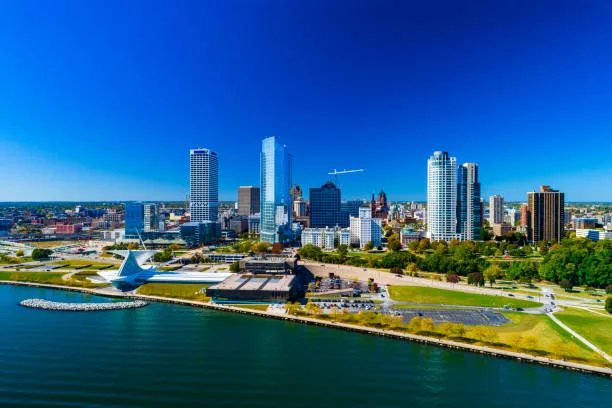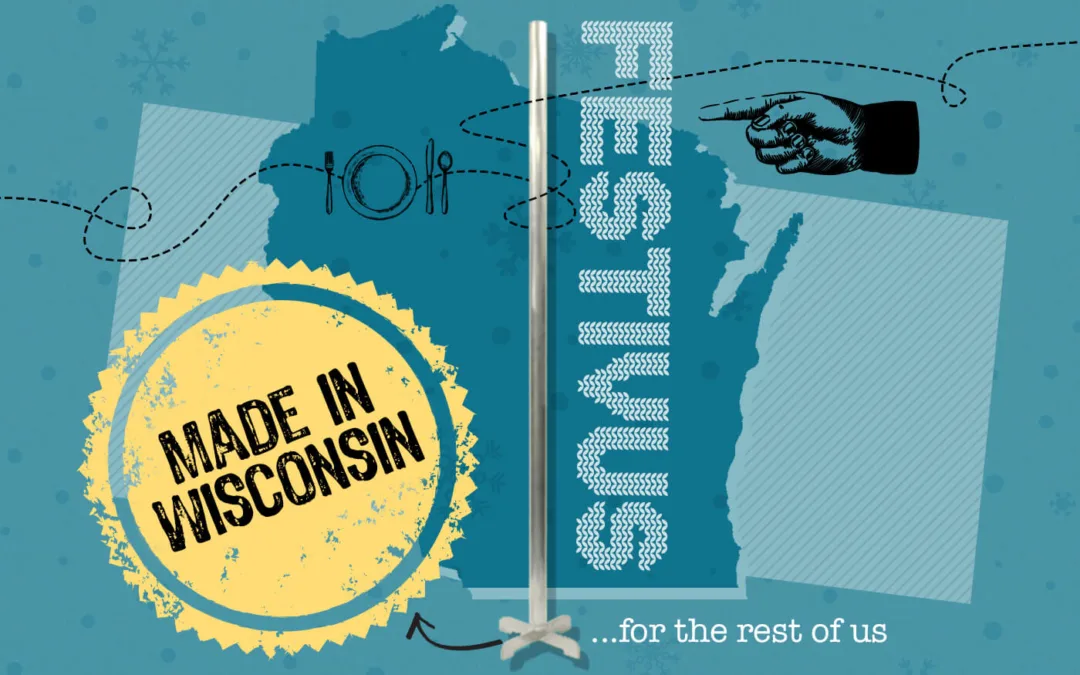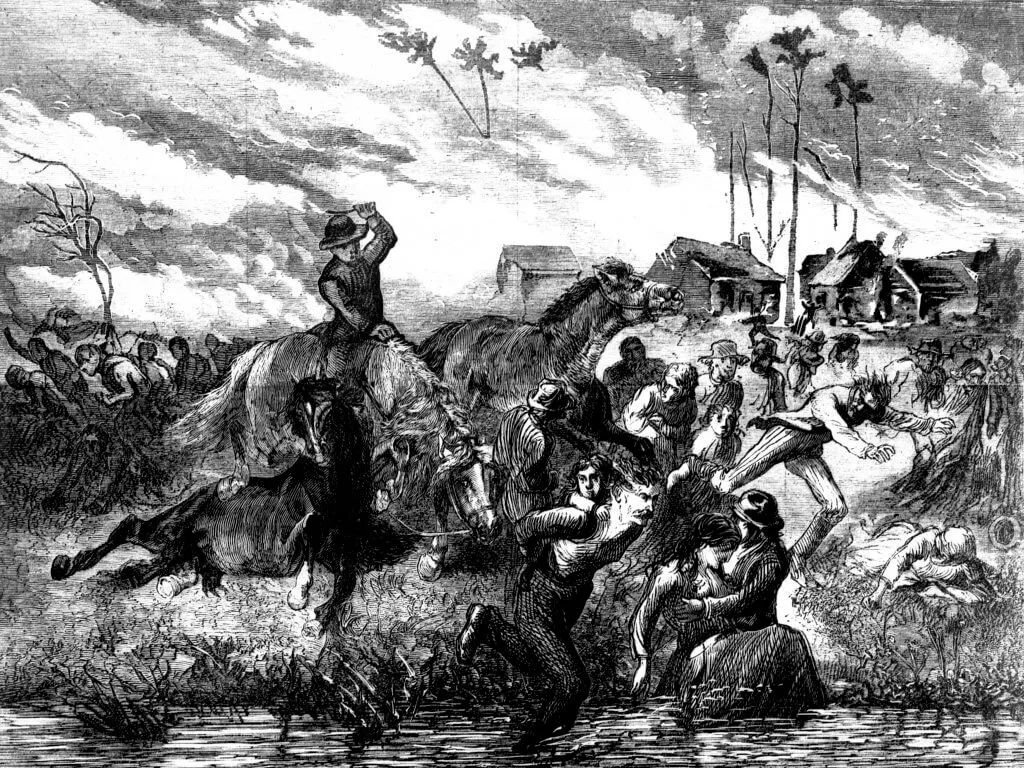
#image_title
#image_title
Wisconsin inferno of 150 years ago remains America’s deadliest.
While coverage of wildfires in the American West dominates 2021 news coverage, most people don’t know that the deadliest wildfire in the nation’s history occurred 150 years ago along the shores of Lake Michigan, right here in Wisconsin.
On Oct. 8, 1871, the Peshtigo fire killed an estimated 1,200 people, burning up 1.2 million acres on both sides of Green Bay and wiping entire communities off the map.
Lumberjacks, Drought, and a Near-Hurricane Whipped Up the Firestorm
Peshtigo’s location, where the Northwoods meets the Great Lakes, made it the perfect location for lots of lumber mills. Nearly every building was made of wood, and piles of sawdust and branches stripped from trees surrounded the town.
A dry 1870 was followed by an even drier 1871 and a huge, swirling low pressure system blew in from the Great Plains with cyclone-speed winds.
Local Rivers Became Refuges and Death Traps
As winds swept the fire from building to building, the people and animals of Peshtigo fled to the icy-cold Peshtigo River, many of them with their clothing on fire. Some estimated the ambient air temperature at 700 degrees, causing spontaneous combustion of clothing and hair.
Buildings on both sides of the river were engulfed in flames, and the hot air was so full of smoke and embers that it was unbreathable. Many drowned, and others perished from hypothermia.
The Rev. Peter Pernin described being in the water for more than five hours, beating out flames from the clothing of his neighbors and draping them with wet blankets. He emerged from the water temporarily blinded and shaking with cold.
Fire Tornado Sweeps Across Green Bay
The fire was so huge and the winds so strong that it swept across the waters of Green Bay to Door County, where it destroyed even more buildings and killed 128 people.
The fire vortex completely wiped out the small town of Williamsonville, which was located on the Ahnapee River. The fiery tornado killed all but 19 of the town’s 76 residents. A group of 35 huddled together in a potato field were burnt beyond recognition.
Tornado Memorial Park, located 10 miles southwest of Sturgeon Bay, and Tornado Road, remember those lost that day.
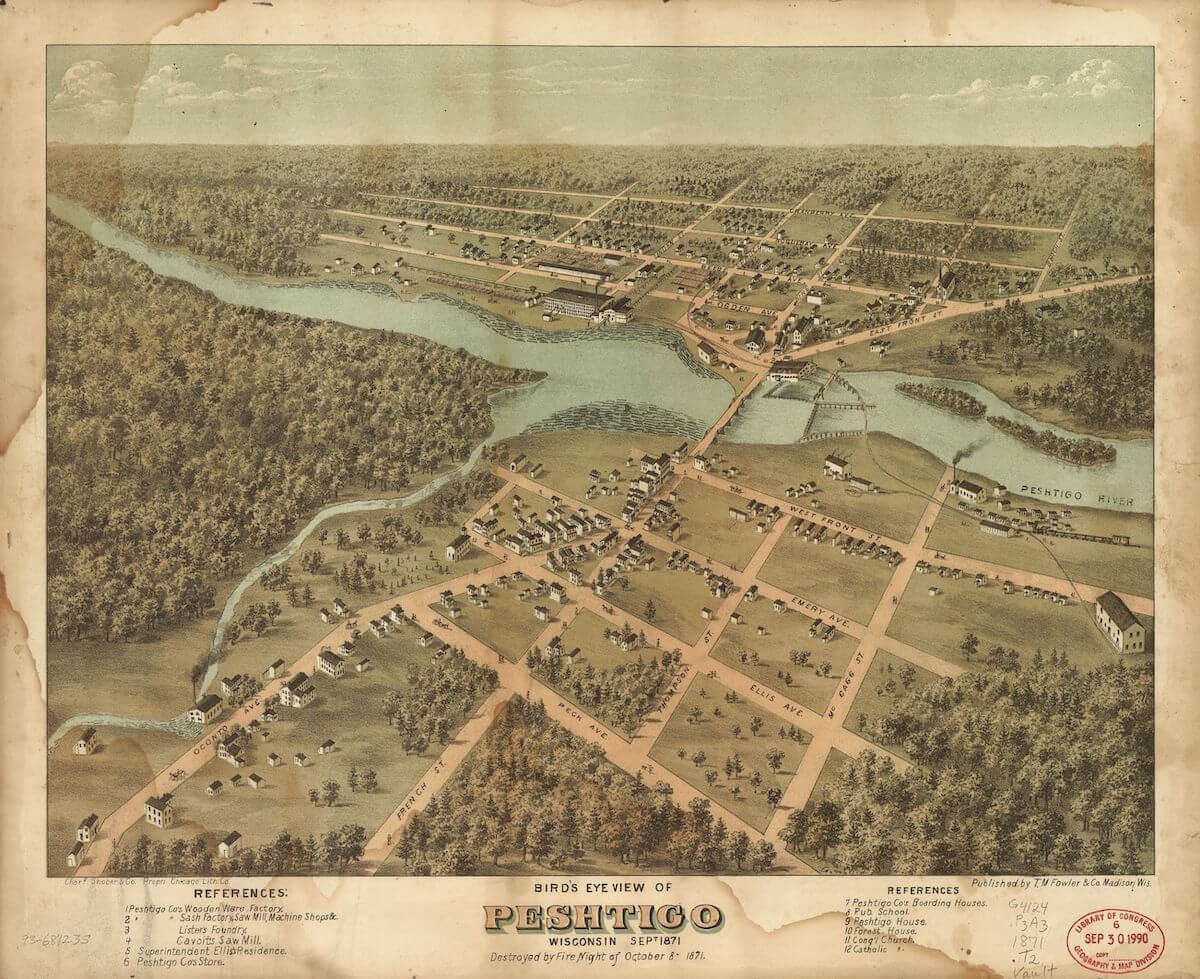
Great Chicago Fire was the Same Day
The same dry conditions that plagued northeast Wisconsin also contributed to the three-day Great Chicago Fire, which occurred at exactly the same time and killed 300 people.
Because it hit a big city, news of the Chicago fire captivated the country, but few knew of the much greater disaster farther north on Lake Michigan.
Adding to the problem, the telegraph lines along both sides of Green Bay had burned, so residents of northeast Wisconsin had to ride to the city of Green Bay to send a message about their plight.
Angel of Wisconsin: First Lady Frances Fairchild
By the time word reached Madison of the conflagration that had hit up north, Wisconsin Gov. Lucius Fairchild had already left the state with a trainload of supplies to help the people of Chicago.
That left his 23-year-old wife, Frances, in charge. When she heard of the plight of her own people, she went to the railroad depot and commandeered a trainload of food and supplies bound for Chicago and rerouted it to Peshtigo on the fastest route possible. She also organised a blanket drive in Madison to give the survivors some protection from the coming cold weather.
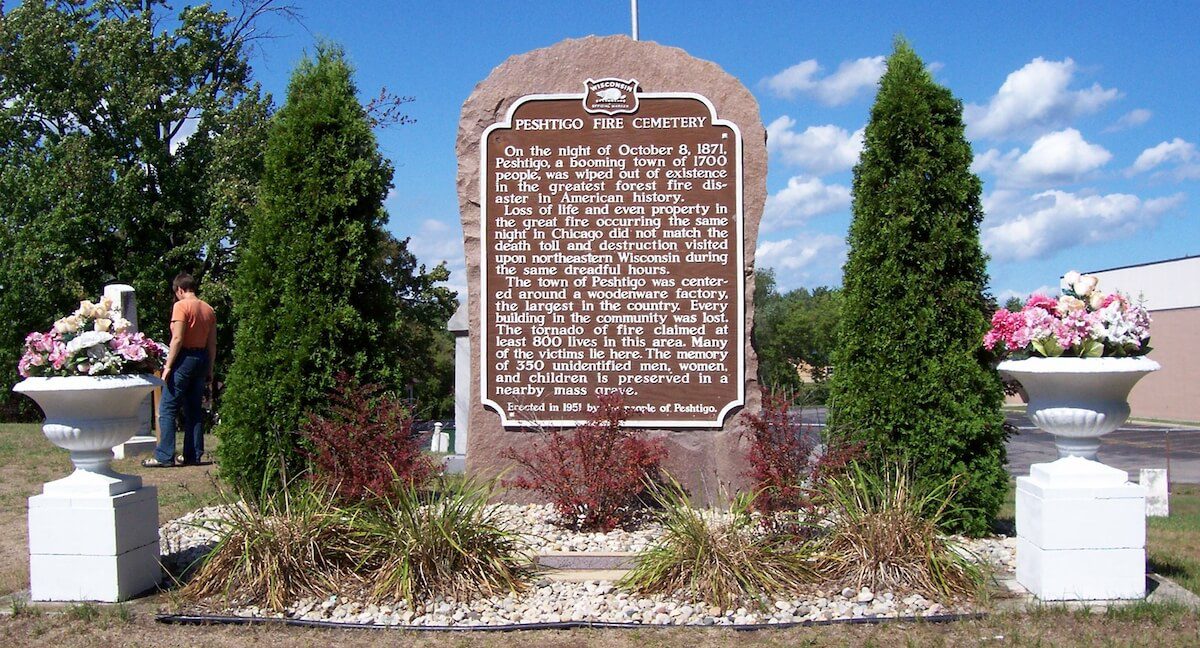
Peshtigo Remembers With a 150th Anniversary Event
Peshtigo Historical Days, Sept. 24-26, will celebrate the community rising from the ashes and commemorate those who were lost 150 years ago. The event includes a historical play at the Embers 1871 restaurant (already sold out), historical re-enactments, a lumberjack show, a beard-growing contest, and a parade.
Politics
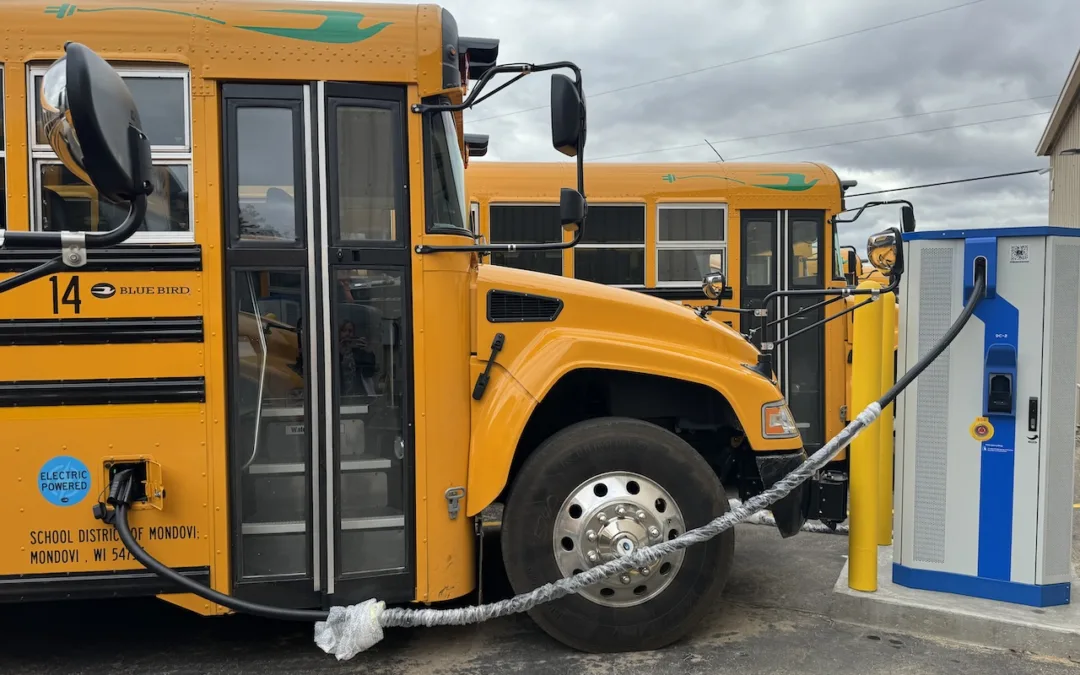
Plugged in: How one Wisconsin school bus driver likes his new electric bus
Electric school buses are gradually being rolled out across the state. They’re still big and yellow, but they’re not loud and don’t smell like...

What’s the difference between Eric Hovde and Sen. Tammy Baldwin on the issues?
The Democratic incumbent will point to specific accomplishments while the Republican challenger will outline general concerns he would address....
Local News

Stop and smell these native Wisconsin flowers this Earth Day
Spring has sprung — and here in Wisconsin, the signs are everywhere! From warmer weather and longer days to birds returning to your backyard trees....

Your guide to the 2024 Blue Ox Music Festival in Eau Claire
Eau Claire and art go hand in hand. The city is home to a multitude of sculptures, murals, and music events — including several annual showcases,...


